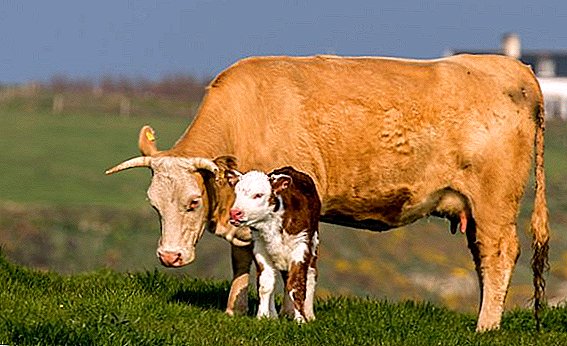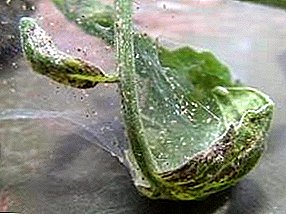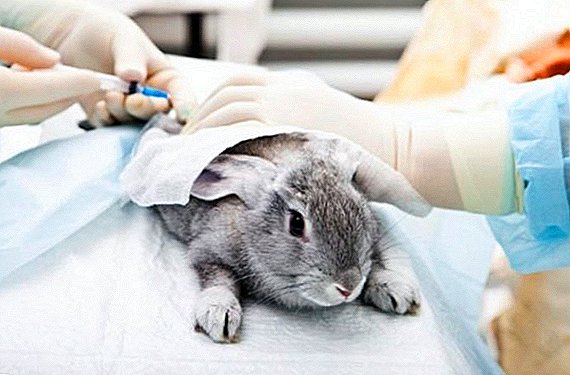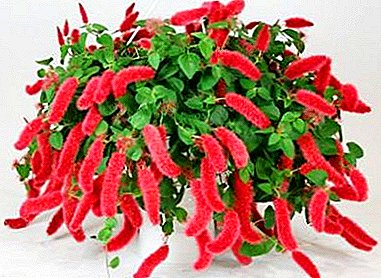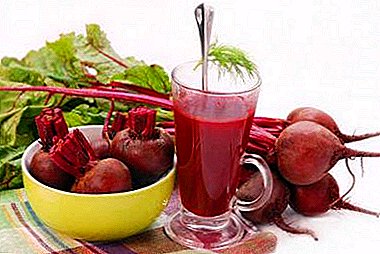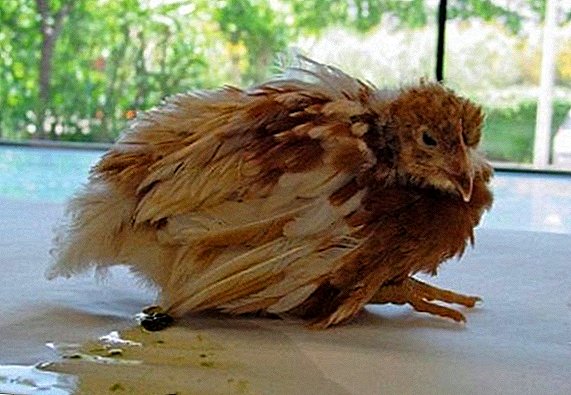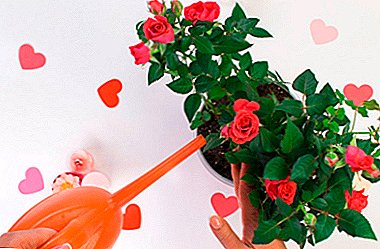 Today, the Lakenfelder is a rather large rarity among chicken breeds: if previously the population of these chickens numbered thousands of heads, nowadays one can count just over a thousand specimens. But you should not forget this interesting breed - these chickens can still be useful for modern breeders. What are the features of lakenfelders, how to maintain and dilute them - about this later in the article.
Today, the Lakenfelder is a rather large rarity among chicken breeds: if previously the population of these chickens numbered thousands of heads, nowadays one can count just over a thousand specimens. But you should not forget this interesting breed - these chickens can still be useful for modern breeders. What are the features of lakenfelders, how to maintain and dilute them - about this later in the article.
History reference
Lakenfelder is one of the oldest breeds: The first mentions of hens, similar in appearance to lachenfelders, are found in the XVIII-XIX centuries. These birds were bred in Westphalia, the Netherlands and Belgium, and more specifically in the cities of Zotterghem and Lackervelt. Outside these countries, the breed did not occur. The main contribution to the development of lachenfelders was made by amateur breeders who worked on improving different types of chickens and breeding new meat and egg breed.  But gradually, other, more prolific breeds began to crowd out this hybrid, and now laekenfelder is on the verge of extinction. The process of degeneration of the breed adds to the difficulties - the appearance of chickens that meet the standard becomes a rarity. Without the support of breeders connoisseurs of lachenfelders, not a single specimen of these birds may be left in the world soon.
But gradually, other, more prolific breeds began to crowd out this hybrid, and now laekenfelder is on the verge of extinction. The process of degeneration of the breed adds to the difficulties - the appearance of chickens that meet the standard becomes a rarity. Without the support of breeders connoisseurs of lachenfelders, not a single specimen of these birds may be left in the world soon.
Hails from the Netherlands are also barnevelder chickens and velzumer, distinguished by their decorative color and good egg-laying performance.
Characteristics and features
It is precisely because of their appearance and characteristics that lakenfelders, although rarely, but still occur in breeders and have not completely disappeared.
Exterior
The breed standard describes laquenfelders as stately birds with a rounded body shape, their wings are large, fit snugly to the body, the neck is of medium length, smoothly turning into a slightly inclined back in roosters and in a horizontal back in chickens. The shoulders are wide, the chest is wide, planted deep. Females in females are somewhat fuller and rounder than males.  In cocks, the tail is formed by several braids with long feathers curving in an arc. The chicken has a small tail, without braids.
In cocks, the tail is formed by several braids with long feathers curving in an arc. The chicken has a small tail, without braids.
The head is small, the males have a large erect ridge and large earrings. In chickens, however, the crest is much smaller, but it also stands upright; there are no earrings. The beak is small, gray.  With all its external massiveness, the weight of the birds is small - the average weight of the male is 2.2-2.5 kg, the females - 2.0-2.2 kg.
With all its external massiveness, the weight of the birds is small - the average weight of the male is 2.2-2.5 kg, the females - 2.0-2.2 kg.
Did you know? Of all the living animals, chicken is the closest relative of dinosaurs.
Color
A true laekenfelder has a color of two colors — black and white (yellow), in approximately equal proportions. The head, neck and tail of cocks and hens should be black. The torso and legs themselves have a white (yellow) color of plumage.
Important! As they mature, the lakenfelders change color, and more than once. Therefore, worry that the chickens do not meet the standard is not worth it.
Temperament
The nature of the lakenfelders is calm, but sociable, they do not cause problems to the owners. Roosters are not aggressive, their fighting qualities show only when a threat to the family occurs. The main condition in the maintenance of such birds is to ensure the correct composition of the family: on one rooster 10 hens. Animals are quite active, they like to run on the aviary. The only negative is the blatantness of the birds, they are satisfied with the sociable.
The breeds of chicken meat and egg directions include maran, amrox, austlororp, Kyrgyz gray, Pushkin Russian crested, golosheyka, Kuban red, and vyandot.
Hatching instinct
Chicken lakenfelder - very good hens. They regularly sit in the nest and hatch chickens, and later become caring mothers. 
Productive qualities
Lakenfelders were bred as meat and egg chickens, but with the advent of new breeds they began to be of value rather decorative, and their productive qualities fade into the background.
Chickens have a decorative appearance: Chinese silk, sybright, araukana, Oryol, silver brekel, Ayam cemeni, Pavlovskaya, bielefelder.
Puberty and annual egg production
At the age of six months Lackenfelders reach the age of maturity and are ready to breed.
Upon reaching six months, the hens begin to nest, but the peak of egg production is 1-2 years old. One hen per year brings about 180 eggs - not the worst figure, even in comparison with record breakers from egg breeds. Chickens rush 10 months a year, a two-month break caused by seasonal molting birds.
In subsequent years, the sediment is reduced, and after three years of life the hens are sent to slaughter. On average, the lachenfelders live 6-7 years. 
Precocity and taste of meat
At 6-7 months, roosters reach their maximum weight, hens - at 9-10 months. Chickens are sent to the slaughter after lowering egg production - in the third or fourth year.
The meat yield is 80-85%. Rooster weight - 2.0-2.2 kg, chicken weight - 1.8-2.0 kg.
Low weight is compensated by delicious meat - white, delicate in taste.
Did you know? In many elite restaurants, lakenfelder meat is valued for its specific taste.
Conditions of detention
Content lakenfelder special difficulties is not.
Coop Requirements
They keep lakenfelders in a spacious chicken coop, as the breed is quite active and may need more space than other chickens.  Pick up the size of the chicken coop, based on this standard - 1-1.5 square meters. m for two chickens. For one family in 10 chickens is to take the room size of not less than 2x3 meters.
Pick up the size of the chicken coop, based on this standard - 1-1.5 square meters. m for two chickens. For one family in 10 chickens is to take the room size of not less than 2x3 meters.
Requirements the floor no - it can be earthen, adobe, cement or boardwalk. On the floor make litter for insulation and ease of cleaning. Straw, sawdust, and sand are suitable as bedding material. As they get dirty, the floor is cleaned and the litter is changed to a new one, about once every 1-2 weeks.
Important! Do not delay the change of litter - dirty material provokes increased humidity and the spread of parasites, which is extremely harmful for birds.
In the hen house arrange artificial lighting - for a good egg laying, daylight hours should be equal to 15-17 hours. At the same time light sources will help maintain the temperature in the room. Although lakenfelders tolerate frosts well, it is necessary to maintain indicators of + 16-18 ° C indoors.  Sleeping chickens on the perch, which is made of wooden logs at a height of 50 cm from the floor. There are roosts in two rows with a gap of 35 cm, a distance of about 25 cm between the last pole and the wall. It is not necessary to build a roost on two floors, in order to avoid conflicts between chickens and pollution of the first floor by birds sitting on top. The length of the poles is selected on the basis of the number of birds: one chicken should have at least 25-30 cm - this will allow them to settle more freely.
Sleeping chickens on the perch, which is made of wooden logs at a height of 50 cm from the floor. There are roosts in two rows with a gap of 35 cm, a distance of about 25 cm between the last pole and the wall. It is not necessary to build a roost on two floors, in order to avoid conflicts between chickens and pollution of the first floor by birds sitting on top. The length of the poles is selected on the basis of the number of birds: one chicken should have at least 25-30 cm - this will allow them to settle more freely.
For hens need nests. They are satisfied in a dark corner of a chicken coop from boxes or baskets. The nest depth is 35-40 cm, width - 30 cm, height - 30 cm. The bottom of the nest is covered with sawdust or straw. The number of nests - 1 to 5 chickens.
Familiarize yourself with tips on how to make and build a chicken coop yourself, as well as how to build a winter chicken coop with your own hands on 20 chickens.
Walking yard
For lakenfelders it is necessary to provide a large walking area - the chickens are very mobile, and there is little of 6-7 square meters for walking. Lakenfelder like to walk for a long time and a lot, even in bad weather and frost up to 10 ° C. Their plumage allows you to lead such an active lifestyle. The height of the fence of the walking yard should be 1.8-2 m. 
Feeders and drinkers
There are no special requirements for feeding troughs and drinking bowls from lakenfelders.
You can use any system and form:
- tray;
- gutter;
- bunker.
The same applies to drinkers - a large cut plastic bottle, a metal bowl, or any other water container will do.
Important! The most important condition is not the type or type of feeders and drinkers, but regular bird access to fresh food and water.
How to endure cold and heat
The plumage of the lakenfelders allows them to tolerate hot weather and temperatures as cold as -10 ° С. But in the room where chickens live, there should always be a comfortable temperature for them - + 16-18 ° C in winter and + 20-25 ° C in summer. 
Moult
In the autumn, the lakenfelders start shedding - they discard the old plumage. This is a normal and natural process, it is caused by seasonal factors and changes in daylight.
Shedding is a big stress for the chicken. At this time, the laying off of eggs stops completely, the hens look sick, they are sensitive to touch. It is important to provide the bird high protein diet (but not higher than 5%), access to clean water, daily walks on the pleasure yard. With the help of artificial lighting you need to increase the light day - this will allow the molt to pass more calmly.
What to feed an adult flock
It’s quite difficult to find a fully balanced diet for lakenfelders on your own. Therefore, all breeders agree that the best food will be professional combined feed and mash, such as "Vogel" and the like. Bags should be made moist and slightly warm. In the mixture you need to add fresh grass, in the winter the greens are replaced with soaked hay and straw.
On your own, you can diversify your dry diet with grains, fish oil, bone meal, yeast. Be sure to drink a clean water in sufficient quantity. Vitamin supplements are recommended in winter and spring - during molting and reducing the laying of eggs.  It is not necessary to give premixes to chickens to increase egg production, in this case they are useless and even harmful.
It is not necessary to give premixes to chickens to increase egg production, in this case they are useless and even harmful.
In the summer they feed the chickens in the morning and in the evening, the daily meal is replaced by green pasture on the range. In winter, they switch to three meals a day with ready-made mixtures and mash.
Learn more about the nutrition of laying hens: feed preparation, the rate of feed for the day.
Breeding chicks
Although lakenfelder females are good chicks, incubation is still the main way of getting chickens. The reason for this is the rarity of the breed: very few farms breed lakenfelders, and it becomes easier to get an egg for incubation than a live chicken. Eggs are mainly shipped from abroad, many are defective and empty. Therefore, lakenfelders are considered difficult to breed and are not recommended for breeders. 
Egg Incubation
Before placing the eggs in the incubator, they should be selected and prepared. All eggs should be the same size, large, without growths, cracks, roughness and other defects. To disinfect them you need to wipe with a weak solution of potassium permanganate.
Important! Wash eggs before placing in the incubator can not.
Incubation rules:
- It is necessary to put eggs in an incubator in the evening - the probability of hatched chickens in the morning and afternoon, and not at night, increases significantly.
- During the warm-up of the eggs you need to turn 10-12 times a day.
- The incubation process lasts 21 days and is divided into three periods, each of which has its own temperature.
- From 1 to 11 days, the temperature should be 39 ° С, humidity 75%.
- From 12 to 18 days the temperature is reduced by 0.5 ° to 38.5 ° C, humidity - up to 60%.
- From 19 to 21 days, the temperature decreases by another degree - to 37.5 ° C, the humidity level remains at the same level or rises to 65%.
Under all conditions, chickens will appear on days 21-22.
Learn how to choose the right incubator for your home and get acquainted with the characteristics of the best: “Layer”, “Ideal hen”, “Cinderella”, “Blitz”.
Care for the young
Chickens in their color do not look like adult birds. They are yellow with speckles, approximately 50% hatch pure white and black. The hatching weight is 38 g. The high survival rate of chicks - 95% can be considered a virtue of the breed.  After hatching, chicks need to be wiped, dried and heated. They are planted in a box or box with sawdust or hay, which is placed in a warm room with a temperature of + 30-32 ° C. Then every week the temperature is lowered by 2-3 °.
After hatching, chicks need to be wiped, dried and heated. They are planted in a box or box with sawdust or hay, which is placed in a warm room with a temperature of + 30-32 ° C. Then every week the temperature is lowered by 2-3 °.
In the first few days of life, the light for the chickens should be on for 24 hours, later the daylight day reduced to 14 hours.
30 days after hatching, the young stock is ready to be placed in the main coop for an adult herd.
Chicken Diet
10-12 hours after hatching, feed the chickens. As a feed, a ground egg with cottage cheese and a small addition of cereal will do. So they are fed 10-14 days.
In the third week of life, the main ration will be feed for chickens with the addition of fresh grass. For drinking give water with potassium permanganate.
Herd replacement
The herd is updated every 3-4 years. Although chickens can live up to 7 years, but after three years they have decreased, and even stopped completely, laying eggs, and there is no sense in keeping such females. By this time, it is possible to grow the young generation of lachenfelders and replace layers. 
Advantages and disadvantages
The main advantages of the breed:
- Unusual and beautiful appearance.
- Resistance to low and high temperatures.
- Calm nature and liveability with other animals.
- Gentle delicious meat.
- High disease resistance.
- Value as show copies.
Among the shortcomings can be called:
- average productivity;
- more space is required compared to other breeds;
- difficulty breeding, a large number of chicks that do not meet the standard;
- a rarity, and therefore difficulty in acquiring eggs and chickens.
Video: Lakenfelder Hens
Lakenfelder - rare, but very beautiful breed of chickens. Difficulties in breeding are compensated by an unusual appearance, tender and tasty meat. Lakenfelders are not suitable for breeding beginners, but experienced breeders can make their own contribution to preserving the ancient breed of birds.


